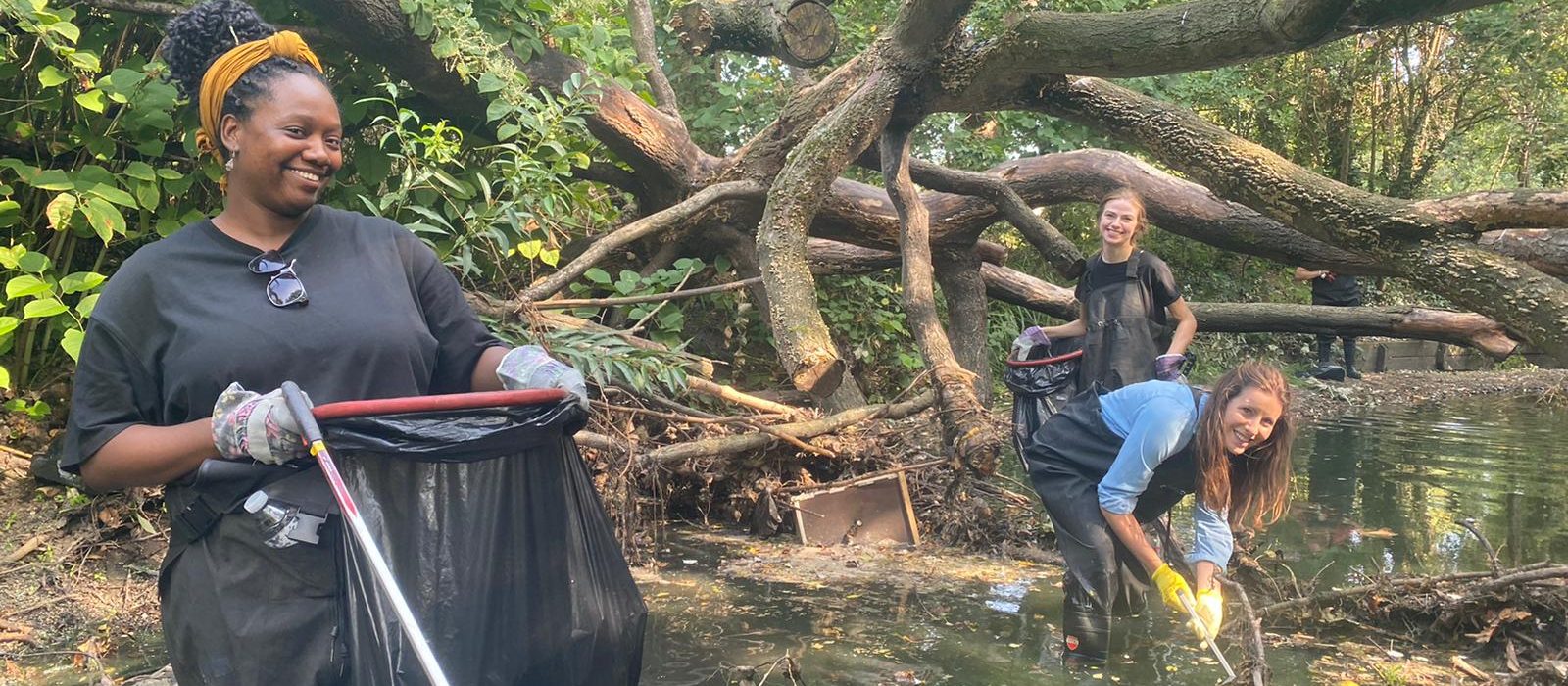Investing in London’s rivers will boost post-COVID recovery, report shows
LONDON RIVERS WEEK 2020
Saturday 24 October – Sunday 1 November
New report shows rewilding promotes social inclusion as well as boosting flagship wildlife species
London, UK – 26 October 2020
Key species including kingfisher, Daubenton’s bat and grey wagtail have spread across London thanks to rewilding efforts on the city’s rivers, according to data released today.
Over a twenty-year period reports of all these species increased, with sightings concentrated along river networks. Kingfisher sightings increased the most, by approximately 450% compared to the twenty-year period before it.
Two inner-city boroughs which have both seen significant river restoration projects, Lewisham and Tower Hamlets, show large kingfisher sighting increases. Lewisham only recorded 27 sightings of kingfisher pre- 2000, but has seen 209 sightings since then. Tower Hamlets recorded 11 sightings of these species up until the year 2000, but 130 sightings since then.
The data was released today in a new River Restoration report, published by the Catchment Partnerships in London group (CPiL) which looks after river catchments in the capital. The same report shows that many river improvement programmes have boosted community cohesion and have the potential to promote social inclusion in the capital due to their diverse geographical spread in both high and low-income areas.
David Webb, Chair of CPiL’s London Rivers Restoration Group said: ‘Not only have these rewilded rivers made it easier for key wildlife species to live here, they have made it easier for people too. This year’s lockdown showed just how important it is for public health that people have access to nature; river rewilding is an affordable way to bring high-quality blue-green space into built-up areas.’
The report draws on 20 years of data to show that river restoration projects have protected communities from flooding, improved the quality of neglected green spaces, helped aquatic species cope with climate change impacts such as drought and flooding and brought nature back into built-up urban areas.
‘River restoration can help London achieve its plans for a green and socially-just recovery from COVID-19,’ said Debbie Leach, CEO of Thames21, which chairs the CPiL group. ‘Rewilding offers a way for London to meet its climate change mitigation and adaptation targets and boost social inclusion and public health at the same time’.
River restoration schemes benefit communities and wildlife by locking in carbon and helping mitigate the impacts of flooding, heatwaves, drought and poor air quality, key challenges for London due to climate change.
The Catchment Partnerships in London group, which represents organisations working to protect rivers across greater London, is calling for a third of London’s rivers to be restored by 2050: ‘We made good progress until 2010 when investment stalled. Aiming for a third of all rivers by 2050 is a realistic stretch target, which offers incredible value for money – river restoration is a highly affordable way to increase and improve green-blue space,’ said Debbie Leach.
London has approximately 400 miles of river (600km) but three-quarters of Thames tributaries are still encased in concrete and metal. Approximately 20.5 miles (33km) has been restored and between 2000-2010 the pace of restorations increased. CPiL want to see the pace increase again to 5km per year in order to meet the 2050 target of a third of London’s rivers restored.
Shirley Rodrigues, Deputy Mayor for Environment and Energy at the Greater London Authority, said: ‘London’s rivers are an important indicator of the environmental health of the city. Although there is a long way to go to make all London’s rivers clean and wildlife-rich, it’s great to see progress is being made to restore and rewild our rivers, and measures like sustainable drainage and bioswales introduced to help cut pollution. London Rivers Week raises awareness of the success so far and highlights how Mayoral policies, and collaboration between environmental charities, boroughs and local communities can ensure further improvement in the future.’
This year’s London Rivers Week, which celebrates the capital’s many rivers, lakes and streams will feature a mixture of socially-distanced riverside and online events, including webinars, river clean-ups, a special podcast, a rewilded river map, and a directory of self-directed virtual walks.
A new River Restoration map with multiple layers shows the key rewilded sites, river walks Londoners can take along rivers to discover them, and a time slider shows just how many areas have been rewilded over the past 20 years.
A self-guided River Walks Directory enables those not able to make events to do their own river journeys of discovery, and a Fish Migration Map enables Londoners to help map river barriers many fish face so that future actions can remove those barriers, and help eel, chub, dace, and salmon migrate across the city in the future.
Thames Water provides sponsorship for London Rivers Week.
Yvette de Garis, Head of environmental engagement at Thames Water, said: ‘We care about the communities and the environment we work in and being a part of London Rivers Week is a fantastic way to give back to those we serve. Every drop of water we all use comes from the environment and it’s important we take care of the capital’s rivers so they can continue to support and sustain the wildlife that lives there. We’re working in partnership with local communities, and investing to keep upgrading our network so we can meet the needs of customers and the environment for years to come.’
London Rivers Week runs from Saturday October 24 – Sunday 1 November.
ENDS
Notes for editors
Media Contact: Kirsten Downer, Thames21 Campaigns and communications Officer Kirsten.Downer@thames21.org.uk 020 7248 7171 or 07711 701 696
